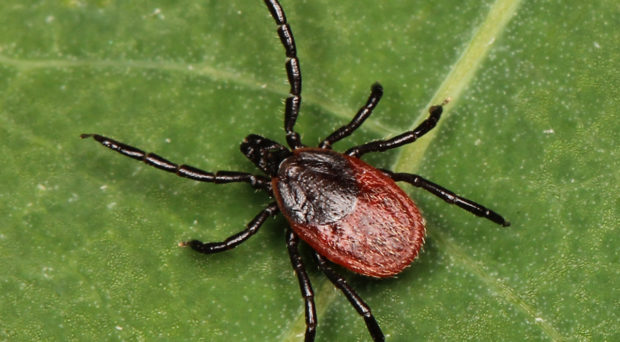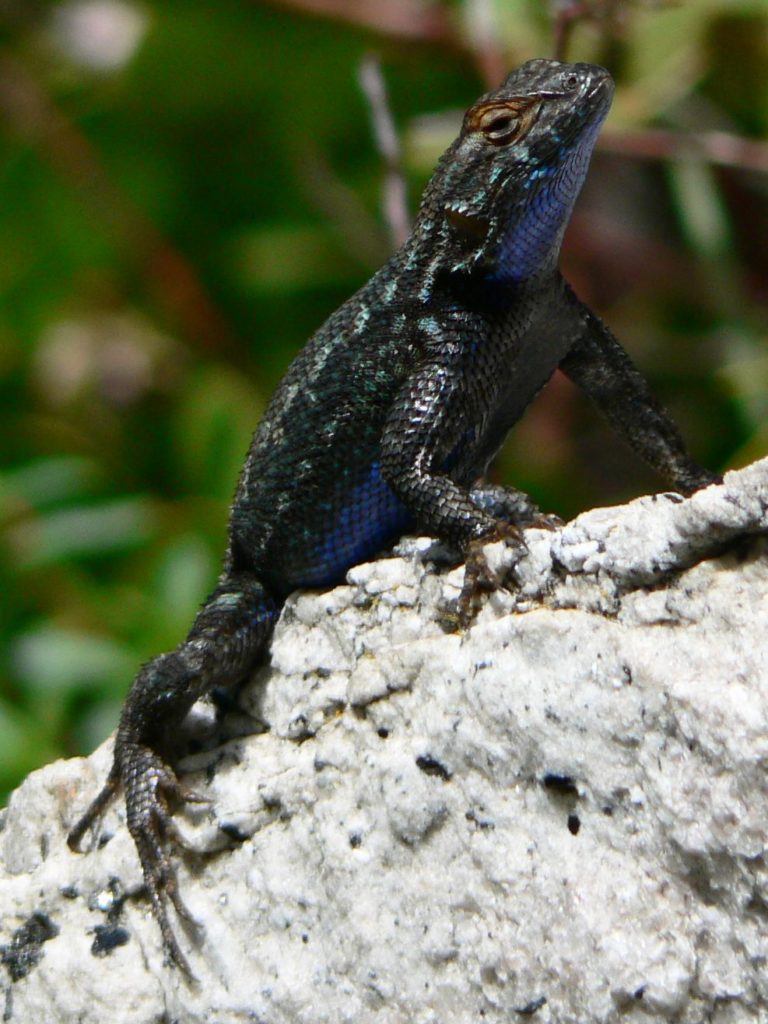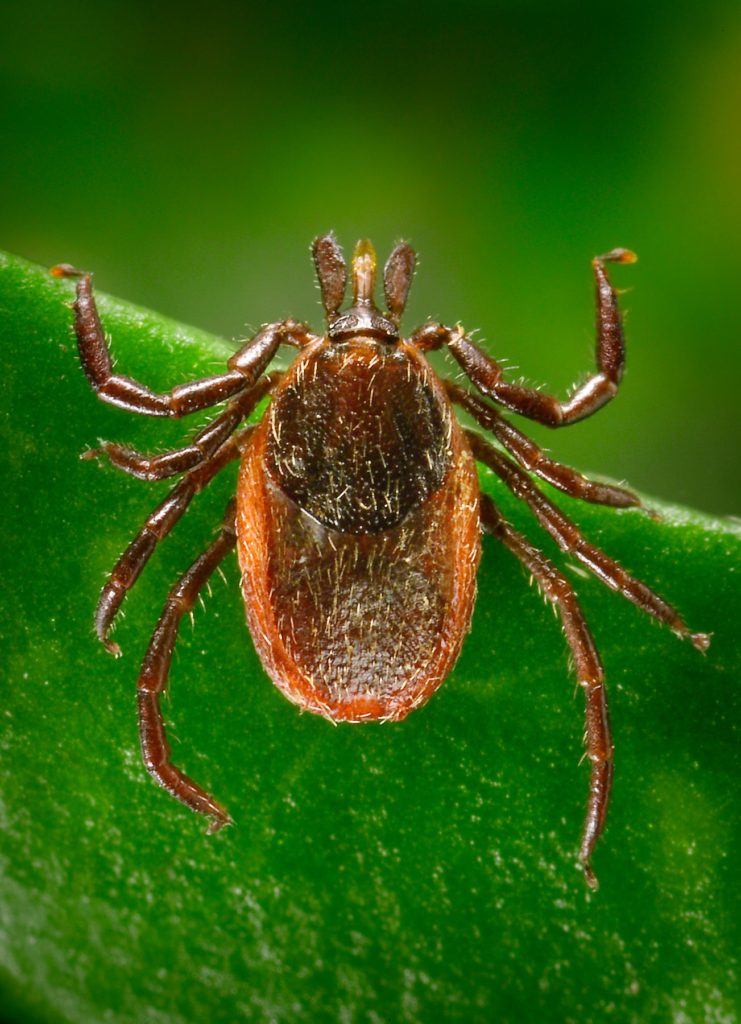
Lizards, like all reptiles, are ectotherms (external regulation of body temperature). Their behaviour is key to how they regulate their body temperature, such as basking in the sun or moving into shade. They have an optimum temperature range, however sometimes they choose sub-optimum temperatures for a variety of reasons, one of which may be due to parasitic infections.
Hosts may alter temperature seeking behaviours, e.g. by choosing higher/lower temperatures despite the negative impact on their physiology, if they are experiencing negative effects from being infected by a parasite. This is a balance between fever which fights infection and hypothermia which protects vital organs during “metabolic trauma” (e.g. from infestations). Both have associated costs.
Ticks are common ectoparasites of lizards. Although not a lot of research has been done on the impact of tick burdens on lizards, current evidence suggests that tick infestations can negatively impact a lizard’s fitness levels including mobility, speed, distance covered, endurance, displays during breeding season and mating opportunities.
In a recent article by Megía-Palma et al (2019) the authors looked at the impact of tick infestation on lizard body mass and temperature-seeking behaviour and how this behaviour may be disrupted by coinfections with coccidian parasites.

Studying lizards, ticks and coccidians
The authors of this study collected 77 adult Western fence lizard Sceloporus occidentalis in Santa Cruz county (42 in April, 35 in June). This lizard species is parasitised by the Western black-legged tick Ixodes pacificus (known to cause hemolysis in the lizard’s blood) and coccidian endoparasites. The authors hypothesized that lizards will show behavioural responses to limit symptoms of tick infestations predicting that:
- Lizards with high tick load will choose lower temperatures/hypothermia to limit cost of tick infestation and reduce blood loss
- Lizards will lose weight proportionally to tick load
Each lizard was housed individually in terraria mimicking natural conditions. Data on sex, size (snout to vent length SVL), weight and body condition as a Scaled Mass index (SMi) were recorded at the start of the study and repeated after 11 days. Experimental thermal gradients ranging from 25-48 °C were set up and used to track the thermal behaviour of the lizards. Body temperature was recorded every minute during the 120 minute trial. Preferred temperature was calculated as the arithmetic mean of measured body temperatures. Maximum and minimum body temperatures were also recorded. Parasitic infections of lizards were recorded by counting number of ticks (tick load) on day 1 and day 11. Researchers differentiated between fed and non-fed ticks. Chronic infections of hematic (Lankesterella occidentalis) and intestinal (Acroeimeria sceloporis) coccidians were diagnosed using a method described by Megía-Palma et al. (2018) at the beginning of the trial.
The preferred temperature of the lizards was influenced by month of capture and the interaction of total tick load and coinfection status. Tick load and preferred temperature (and maximum body temperature) were negatively associated in lizards without coccidian infections and in lizards with hematic coccidians only. This association was lost when lizards were infected with the intestinal coccidian (whether alone or with the hematic coccidian). Lizards lost body mass after 11 days and body mass change was significantly negatively associated to tick load at capture, with lizards that had more ticks losing more weight. The total tick load decreased significantly after 11 days in terraria but when disaggregated the authors showed that only the number of fed ticks decreased, not the number of non-fed ticks.

Lizards, infections and climate
Tick infestations were associated with cold-seeking (“behavioural hypothermia”) behaviour in lizards, with higher tick loads linked to lower preferred temps and lower max body temperatures. Tick infestations were associated with body mass loss which was proportional to the tick load. Body mass for lizards is associated with fighting and mating successes for males and offspring condition in females. Thus body mass loss due to tick infestations could be a direct fitness cost.
The “behavioural hypothermia” recorded in this study is likely to be an adaptive response of S. occidentalis lizards to seasonal variations of tick infestations. Lizards may reduce their metabolic activity through “behavioural hypothermia” in order to reduce peripheral blood circulation and thus control tick infestations by limiting the blood intake of ticks (hence the decrease in fed ticks in this study).
The findings also suggest that the intestinal coccidian parasite A. sceloporis disrupted this cold-seeking behaviour of tick-infested lizards. Why? The authors call for more research to understand why this might be the case: is there a greater cost associated with the intestinal coccidian parasite that requires a different behavioural response (e.g. more foraging, warmer temps?) or is there a mechanism induced by the A. sceloporis parasite for it’s own benefit (host-manipulation).
Lizards and other ectotherms need microhabitats and a range of temperatures to choose from, not only to thermoregulate, but also to allow them to use temperature to control the impact of parasitic infestations and infections. Lizards need to be able to access cooler temperatures to reduce the impact of tick infestations. Both “behavioural fever”, choosing higher temperatures to control infections, and “behavioural hypothermia”, choosing cold temps to control infestations, are used by ectothermal animals. Climate change poses a huge risk to ectotherms, in this case removing their ability to control and reduce the negative affect of parasitic infections and infestations on their fitness.

Comments